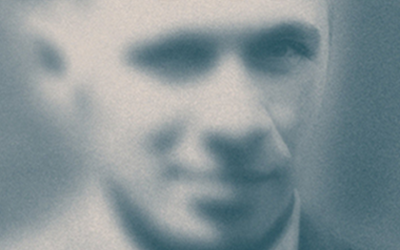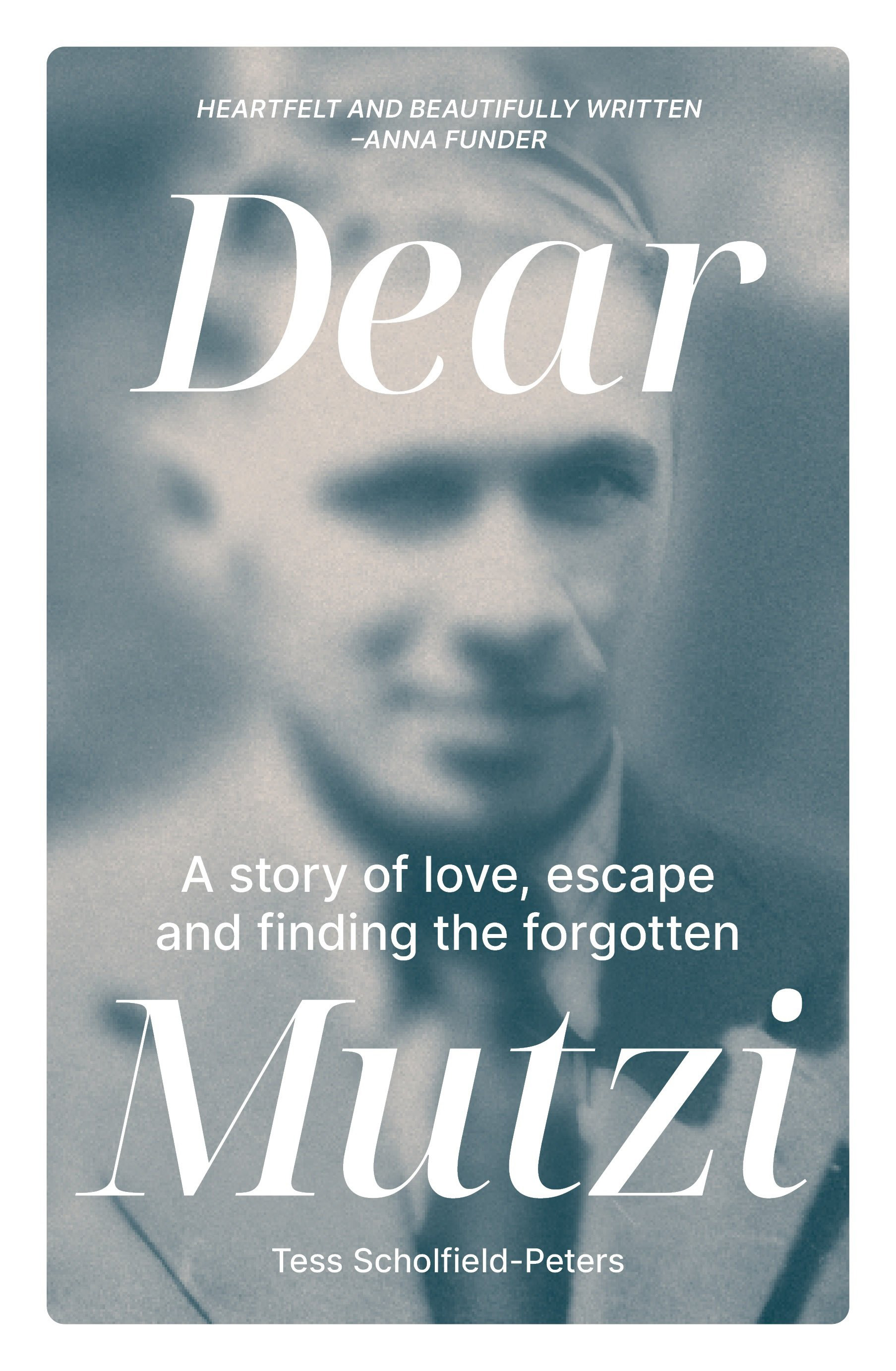
- Free Article: No
- Contents Category: Memoir
- Review Article: Yes
- Article Title: A daunting task
- Article Subtitle: Skirting the edges of fiction and non-fiction
- Online Only: Yes
- Custom Highlight Text:
After sixty years, Hannah Arendt’s phrase ‘the banality of evil’ has almost become a cliché. Yet, in films like Jonathan Glazer’s Zone of Interest it is powerfully present in every mundane detail of the Auschwitz commandant’s family life. What of the banality and trauma of the lives of survivors or those murdered? There is a view that if the victims had been more aware of their fate, they would have escaped and survived. This claim is an insult, as most had no choice. The overwhelming majority of Jews, many of whom were alert to the risk of mass extermination, were unable to get exit visas, afford to flee, or obtain refuge in North America, Australia, and the United Kingdom. Tess Scholfield-Peters’ grandfather, Hermann (Mutzi) Pollnow, was one of the lucky ones.
- Featured Image (400px * 250px):

- Alt Tag (Featured Image): Boris Frankel reviews 'Dear Mutzi' by Tess Scholfield-Peters
- Book 1 Title: Dear Mutzi
- Book 1 Biblio: NLA Publishing, $34.99 pb, 238 pp
- Book 1 Cover Small (400 x 600):

- Book 1 Cover (800 x 1200):

Briefly, in 1938, Mutzi, an unworldly eighteen-year-old, was sent by his parents to a Jewish agricultural training school, Gross Breesen. Their aim was for him to acquire a skill and eventually to escape the Nazis by obtaining a job in North America or Australia. However, during the Kristallnacht pogroms in November 1938, the school was vandalised, and the students were incarcerated in Buchenwald. Released after a month, Mutzi was ordered to leave the country. With the help of Jewish welfare groups, he arrived in Australia in 1939 and worked on farms in South Australia and New South Wales. Meanwhile, Mutzi’s parents remain trapped in Berlin and eventually died in concentration camps. Now known as Harry Peters in Australia, Hermann became a successful doctor after the war and lived to the age of one hundred.
Dear Mutzi indirectly raises fundamental questions about the depiction of the post-Holocaust lives of parents and grandparents by third-generation writers. How do contemporary writers satisfy our desire for the extraordinary, rather than the banality of ordinary lives? Scholfield-Peters and other young authors have a daunting task, given the saturation of images in countless Holocaust books, films, and documentaries. She is a skilled writer with a good eye for detail who writes lovingly about her grandfather and the Pollnow family. However, she does not expand our knowledge or understanding of pre-war Nazi Berlin, the Shoah, or the post-Holocaust migrant experience in Australia.
One of the tensions inherent in writing family histories is the struggle to determine what ordinary details are of interest to family, friends, or perhaps to Holocaust museums that collect survivors’ memoirs; and what may be illuminating to a wider readership. Dear Mutzi offers only glimpses of Hermann and the Pollnows. Mutzi appears as an unremarkable, innocent youth or a demented old man who cannot remember much. The intervening eighty years remain opaque.
The book also inadvertently raises questions about existing practices in the creative arts. Teaching staff in university faculties and arts institutes remain divided over whether or not to admit young undergraduates straight from school to film and creative writing courses. Learning the techniques of filmmaking or writing is insufficient. Rather, we should consider what historical, political, philosophical, and social-psychological knowledge and experience the students (of any age) bring with them or are required to learn in their courses.
Despite near saturation, it is still possible to encounter imaginative narratives about the Nazi period. Think of Andreas Dresen’s film From Hilde, with Love, which deals with the ‘Red Orchestra’ anti-Nazi youth of Mutzi’s age and imaginatively reconstructs traumatic scenes of their last days in a women’s prison. By contrast, Scholfield-Peters’ inclusion of fictional scenes in Dear Mutzi is uneven. At times, these fictional narratives work well. At other times, the fictionalised scenes convey little more than trite small talk rather than shedding light on the Pollnows’ dire predicament. For example, there is little dialogue revealing Max’s and Edith’s few options after 1936 or their shock as conservative, middle-class Jews in realising that assimilated German Jews were not safe. Neither is there an adequate reconstruction of Max’s deteriorating working conditions as a Jewish doctor in Berlin, nor the Pollnows’ final experiences in the Terezin camp and at Auschwitz.
While archival material and the personal papers of the Pollnows are limited, the book would have benefited greatly from a more detailed contextual historical and social account of life in Berlin and Australia. Many liberal documentaries on the Nazis, and even the curatorial emphasis displayed at the Jewish Museum in Berlin, often exclude politically uncomfortable questions as to why the Nazis were anti-Semitic. In a similar vein, Scholfield-Peters assumes that Jews were either religious or ideologically split between the patriotic assimilated middle-class (the Pollnows) and Zionists. No mention is made of the prominent leadership roles played by Jews in socialist and communist mass movements, or why Hitler was so obsessed with destroying the ‘Judeo-Bolshevik menace’.
The absence of substantial historical and political detail is not alleviated by any psychoanalytic examination of Mutzi’s life. Fine writers on Holocaust trauma, such as Dominick LaCapra, have made valuable distinctions between absence and loss suffered by survivors. Although Scholfield-Peters briefly mentions that Mutzi suffered from PTSD, which affected his first marriage, she tells us little about how the Pollnows’ traumas reverberated throughout his life. Psychoanalysing Mutzi’s PTSD would have been difficult: the author came late to her subject, and his dementia would have ethically precluded any such analysis.
Instead of a detailed socio-historical or psychological analysis, considerable space is devoted to Scholfield-Peters’ tender relationship with the elderly, demented Mutzi. The author as a substitute central character (investigator) is a familiar trope in journalism and literature. Yet, third-generation Holocaust writing needs much more substance than is provided by Scholfield-Peters inserting herself as an alternative historical subject. Otherwise, readers will prefer comprehensive historical studies or the richer memoirs of first- and second-generation Holocaust victims and how these survivors adjusted to post-Holocaust life in Australia.


Comments powered by CComment